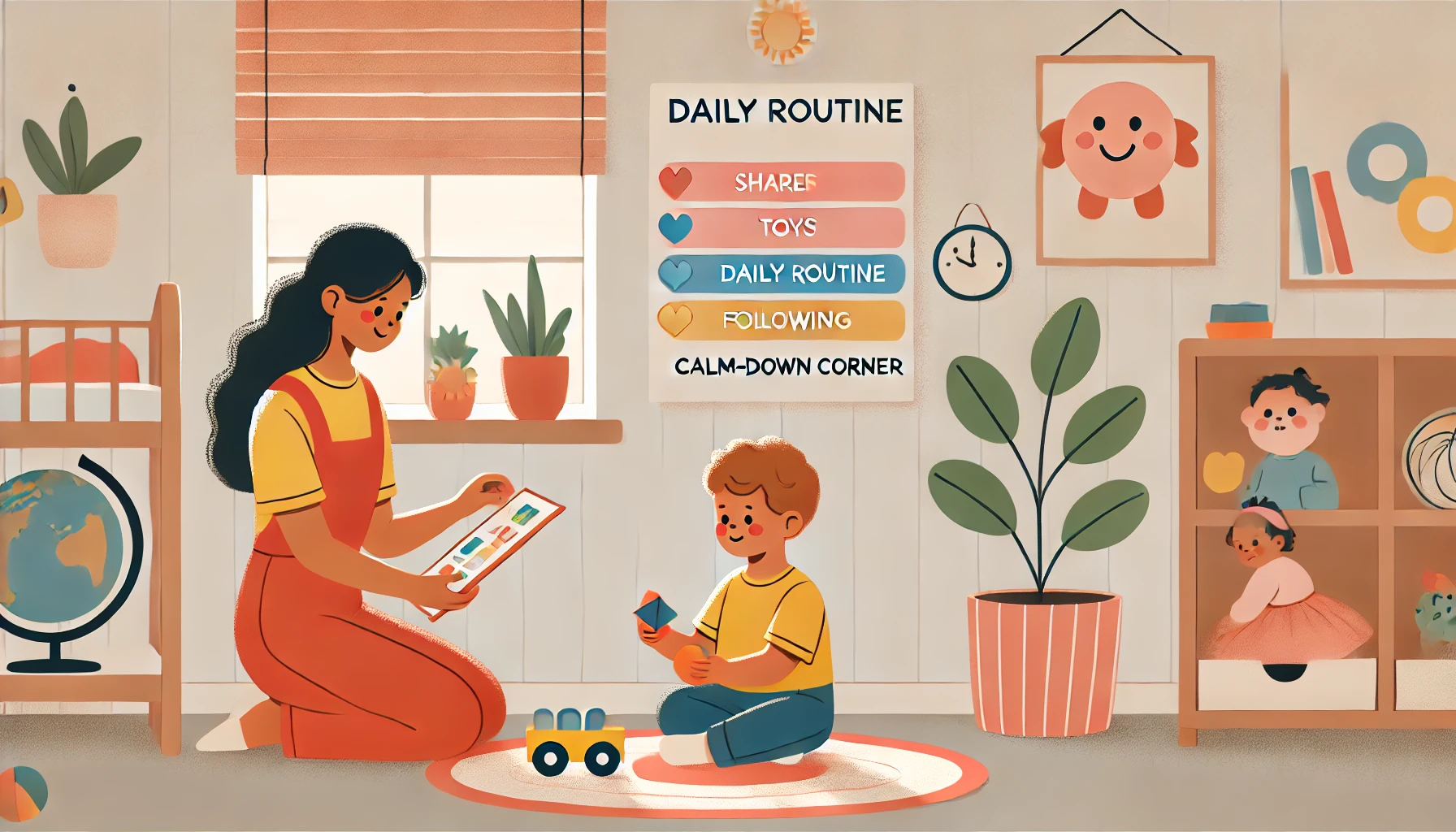How to Encourage Positive Behavior in Young Children at Home
Teaching children positive behavior at an early age helps them develop respect, self-discipline, and emotional regulation. Encouraging good behavior through consistency, positive reinforcement, and clear expectations creates a nurturing home environment where children feel safe and motivated to make good choices. In this article, we’ll explore practical strategies to promote positive behavior in young children.
Why Encouraging Positive Behavior is Important
- Builds self-discipline – Helps children learn to regulate their emotions and actions.
- Strengthens parent-child relationships – Encourages trust and open communication.
- Reduces frustration and tantrums – Teaches children how to express their needs appropriately.
- Fosters kindness and respect – Helps children develop empathy and consideration for others.
- Prepares for social interactions – Encourages cooperation and teamwork in different environments.
1. Set Clear and Consistent Expectations
Children need to understand what behaviors are expected of them.
Activity Idea:
- Use simple language to explain house rules, such as “We use kind words” or “We clean up after playing.”
- Create a visual chart with pictures representing positive behaviors.
- Remind children of expectations before activities (e.g., “At the store, we walk and use our quiet voices”).
What Kids Learn:
- Understanding of rules and boundaries
- Responsibility for their actions
- How to behave appropriately in different situations
2. Reinforce Good Behavior with Praise and Rewards
Positive reinforcement helps children feel motivated to continue good behavior.
Activity Idea:
- Praise specific actions: “I love how you shared your toy with your sister!”
- Use a reward system, like a sticker chart, for completing tasks.
- Give small rewards such as extra storytime or choosing a favorite activity.
What Kids Learn:
- The value of making good choices
- Self-motivation
- Recognition of their efforts
3. Teach and Model Emotional Regulation
Helping children understand and manage their emotions prevents negative behaviors.
Activity Idea:
- Use emotion flashcards to help children recognize and label feelings.
- Model calm behavior when dealing with frustration: “I’m feeling upset, so I’m taking deep breaths.”
- Teach problem-solving strategies like “counting to ten” or “taking a break.”
What Kids Learn:
- Self-awareness of emotions
- Healthy ways to express frustration
- Coping skills for difficult situations
4. Encourage Positive Social Interactions
Teaching kindness and cooperation helps children build strong relationships.
Activity Idea:
- Role-play scenarios where children practice taking turns and sharing.
- Encourage them to use polite words like “please” and “thank you.”
- Organize playdates or family activities that promote teamwork.
What Kids Learn:
- Social skills and cooperation
- Empathy and respect for others
- Effective communication
5. Offer Choices to Empower Decision-Making
Allowing children to make small choices fosters independence and responsibility.
Activity Idea:
- Let them choose between two healthy snacks or two outfits.
- Give them options for activities, such as “Would you like to read a book or do a puzzle?”
- Encourage them to make decisions and discuss the outcomes.
What Kids Learn:
- Decision-making skills
- Confidence in their choices
- Responsibility for their actions
6. Set Up a Calm-Down Corner
Providing a space for children to self-regulate helps them handle emotions positively.
Activity Idea:
- Designate a quiet area with soft pillows, books, or calming toys.
- Encourage children to use the space when feeling overwhelmed.
- Teach them to take deep breaths or use mindfulness techniques while in the calm-down corner.
What Kids Learn:
- Emotional self-regulation
- Healthy ways to deal with big emotions
- Personal responsibility for calming down
7. Use Logical Consequences Instead of Punishment
Helping children understand the impact of their actions teaches responsibility.
Activity Idea:
- If a child makes a mess, involve them in cleaning it up.
- If they refuse to share a toy, explain why the other person feels upset.
- Use gentle, logical consequences rather than harsh punishment.
What Kids Learn:
- Accountability for their behavior
- The impact of their actions on others
- Problem-solving to correct mistakes
8. Be a Positive Role Model
Children learn from observing how parents and caregivers behave.
Activity Idea:
- Show kindness and patience in daily interactions.
- Apologize when making mistakes to model accountability.
- Demonstrate respectful communication with family members.
What Kids Learn:
- How to treat others with kindness and respect
- The importance of leading by example
- Lifelong positive behavior habits
Final Thoughts
Encouraging positive behavior in young children requires consistency, patience, and modeling good habits. By using praise, setting clear expectations, and teaching emotional regulation, parents can create a nurturing environment that helps children develop self-discipline, respect, and kindness.
